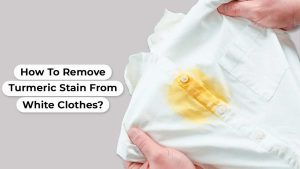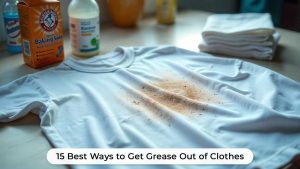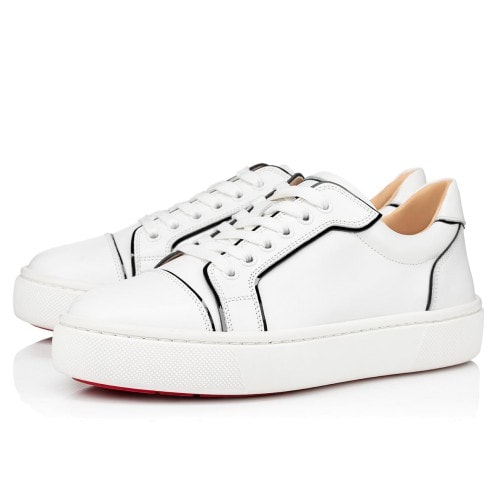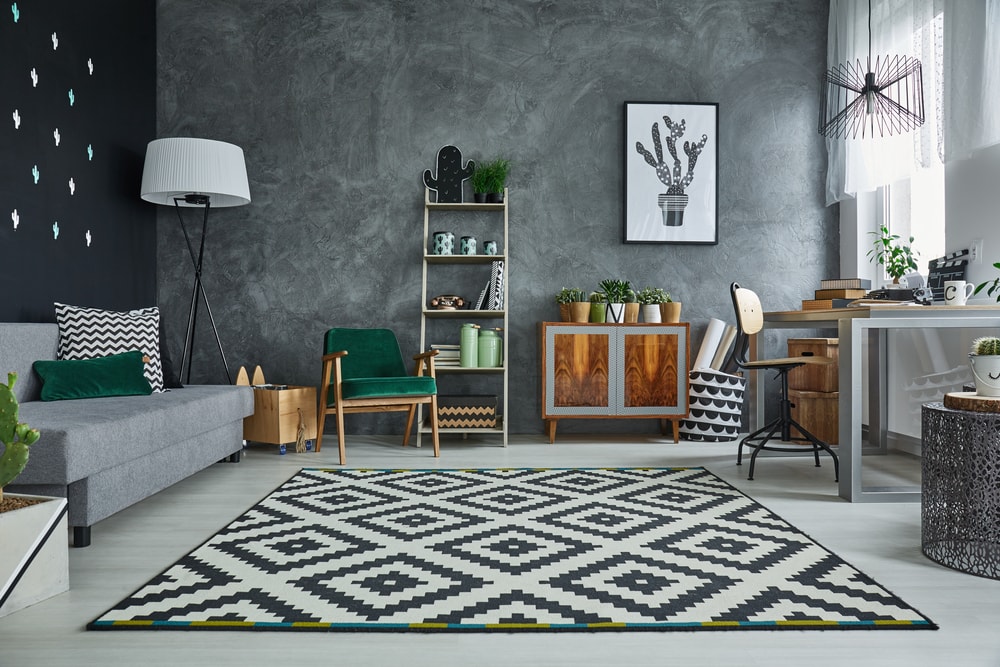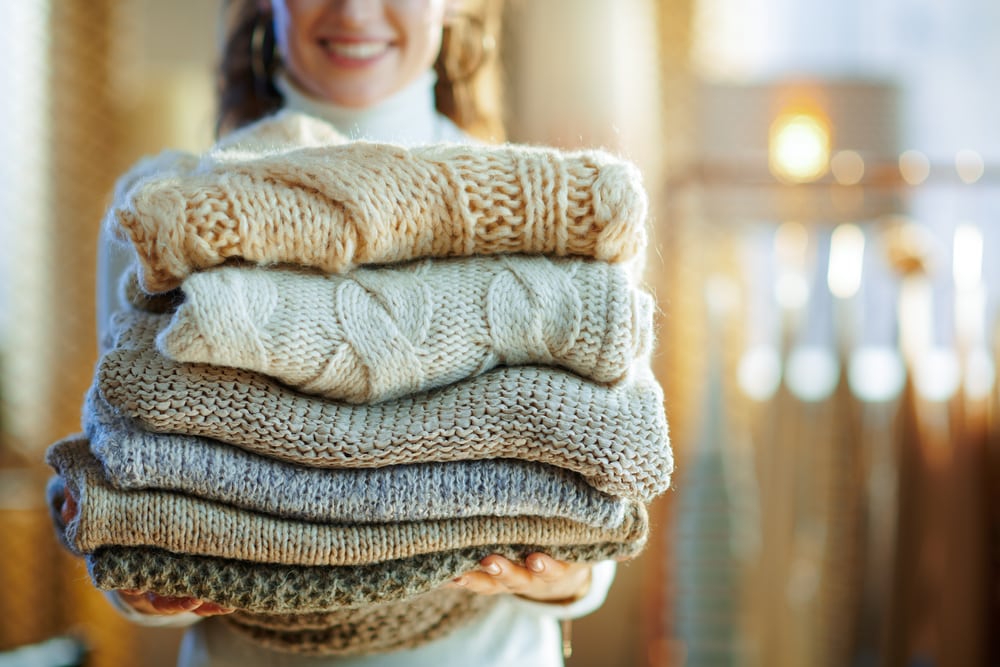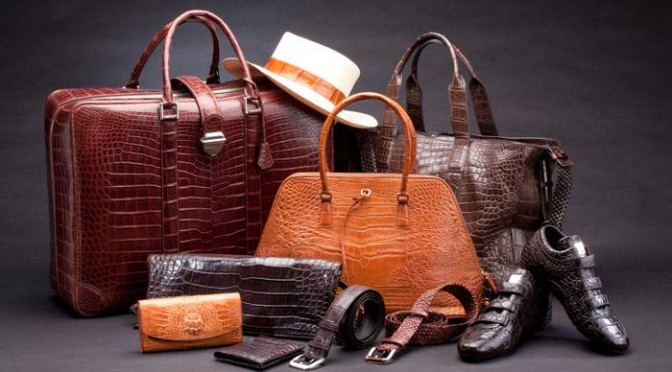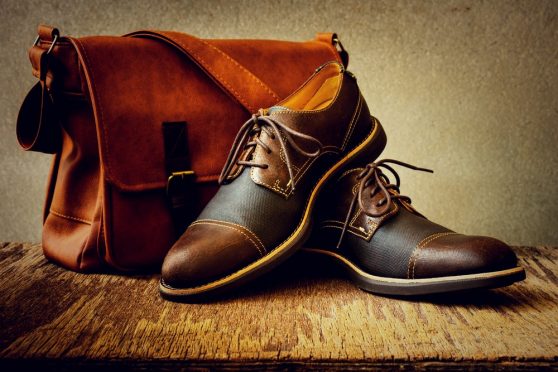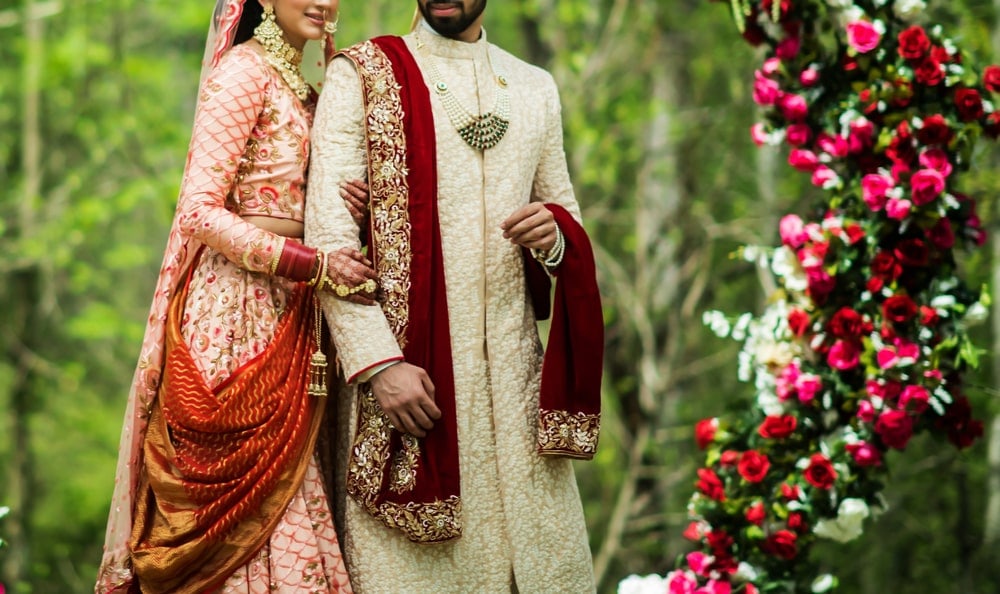Which is the best steam iron or a...
Read More- Blogs
- Dry Cleaning
- Different Types of Silk Fabric: Complete Care Guide
Different Types of Silk Fabric: Complete Care Guide
- Riya Yadav
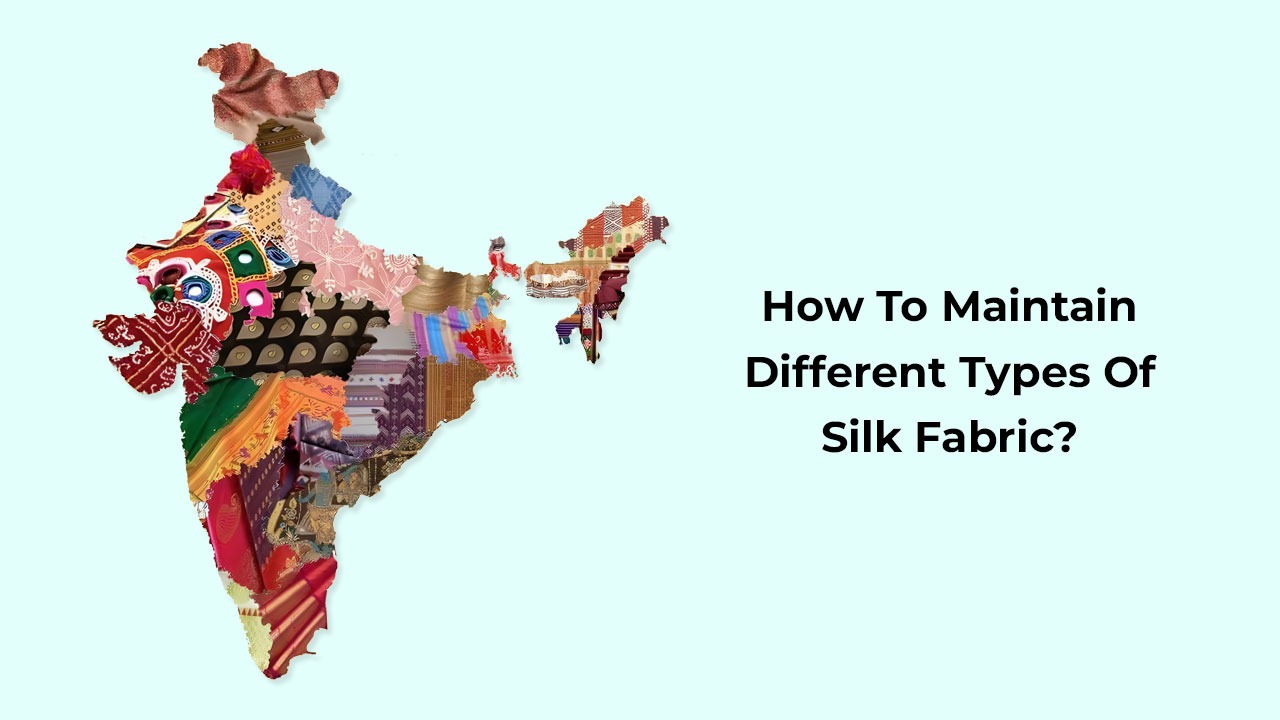
Table of Contents
Silk, the queen of fabrics that has been the epitome of elegance, luxury, and sophistication. Ranging from the shiny feel of Charmeuse to the stiff texture of Taffeta, each variety of silk fabric demands special care to preserve its beauty and life. If you have silk clothes, bedding, or accessories, it is important to know about maintaining different types of silk fabric.
In this ultimate guide to silk care, we will break down silk care by silk type, from washing and storing to handling and stain removal. From Mulberry silk, to Dupion and Habotai, this guide will serve you well in preserving your investment and keeping your silk looking as lovely as the day it was purchased.
Why Silk Needs Special Care
Silk is a natural protein fibre obtained from the silkworm. Its soft threads are extremely prone to damage by strong chemicals, friction, and even sunlight. In contrast to synthetic materials, silk does not take kindly to hot water, rough treatment, or normal detergents. Any negligence while cleaning can lead to color loss, fibre weakening, and permanent destruction.
Common risks to silk fabrics:
- Color bleeding
- Shrinkage
- Stiffness or loss of luster
- Water spots
- Fabric thinning due to abrasion
Different Types of Silk Fabric & How to Maintain Them
Each type of silk has a unique weave, finish, and texture. Here’s how to maintain the most popular ones:
1. Mulberry Silk- Most Popular Among Different Types Of Silk Fabric
Mulberry silk is the best and most coveted variety of silk, renowned for its exceptional softness, durability, and natural luster. Produced from the cocoons of Bombyx mori silkworms that are raised exclusively on mulberry leaves, this silk is remarkably silky and hypoallergenic. Mulberry silk fabric is widely utilized in high-end bedding, scarves, and high-end apparel because it is breathable and wicks moisture well.
Overview: Mulberry silk is the most common and luxurious type, used in bedding, scarves, and high-end garments. It’s prized for its softness, durability, and hypoallergenic properties.
Care Tips:
- Washing: Hand wash in cold water with a pH-neutral detergent. Do not soak for more than 3–5 minutes.
- Drying: Lay flat on a towel and roll to remove excess water. Air dry in the shade.
- Ironing: Use the lowest heat setting with a pressing cloth. Iron while slightly damp. If you are looking for a professional ironing for your silk clothes, you can use Tumbledry’s expert steam ironing & dry clean services.
Storage Tip: Store in a breathable cotton bag away from sunlight and humidity.
2. Charmeuse Silk- Lightweight Among Different Types Of Silk Fabric
Charmeuse silk is a rich, lightweight fabric which has a glossy front and a matte back, producing a fluid, flowing drape with a liquid-like feel against the skin. It is widely utilized in evening gowns, blouses, lingerie, and scarves and, as a fabric, brings glamour to a look. Its opulent sheen and velvety texture secure its popularity for sophisticated, body-hugging silhouettes.
Overview: Charmeuse is lightweight with a glossy front and matte back. Commonly used in evening wear and lingerie.
Care Tips:
- Washing: Hand wash only. Machine wash (if at all) on the gentlest cycle inside a mesh bag.
- Drying: Do not wring. Gently press with a towel and air dry flat.
- Ironing: Use low heat. Always iron on the reverse side to protect the sheen.
Avoid: Direct exposure to perfumes and deodorants.
Want professional silk dry cleaning! Choose Tumbledry & get 20% Off
3. Dupion (or Dupioni) Silk- Perfect for Saree
Dupion silk, also called Dupioni silk, is a crisp, textured weave made from uneven silk threads, creating a characteristic slubbed finish. Its distinct texture provides richness and depth and is therefore much sought after for sarees, suits, jackets, and formal garments. Characterized by a natural sheen and stiff drape, Dupion silk fabric retains its shape well, thus suited best to structured apparel and opulent interiors. Its capacity to reflect light stunningly adds to its beauty, and it is an evergreen choice for party and wedding collections. Strong and elegant, Dupion silk weaves tradition and modernity seamlessly.
Overview: Dupion silk is known for its coarse texture and irregular slubs, making it ideal for structured garments like sarees and jackets.
Care Tips:
- Washing: Dry clean is highly recommended. Hand washing may cause texture loss.
- Drying: If hand washed, dry in the shade, away from heat.
- Ironing: Use a medium heat setting with steam. Always iron inside out.
Storage Tip: Hang using padded hangers to maintain the shape.
4. Taffeta Silk- Smooth Among Different Types of Silk
Taffeta silk is a crisp, smooth textile famous for its structured drape and slight sheen, which makes it perfectly suitable for evening gowns, bridal attire, and high-end interiors. Woven closely from silk yarns, it retains its form nicely and gives volume to clothes. Dignified and classic, taffeta silk fabric infuses any design or event with a pinch of elegance.
Overview: Crisp and structured, taffeta is often used in gowns, dresses, and drapes. It has a smooth surface with a subtle sheen.
Care Tips:
- Washing: Dry clean only. Water may leave permanent spots.
- Drying: Never wring. Let dry naturally if exposed to moisture.
- Ironing: Use a cool iron. Place a cloth between the iron and the fabric.
Tip: Fold garments loosely to avoid creasing.
5. Habotai Silk
Overview: Also known as “China silk,” Habotai is light, soft, and affordable. Often used in linings and casual blouses.
Care Tips:
- Washing: Can be hand or machine washed (gentle cycle). Use cold water only.
- Drying: Hang to air dry but avoid direct sunlight.
- Ironing: Use low heat while the fabric is damp.
Note: Habotai may shrink if exposed to hot water.
6. Organza Silk- Dressed Oriented Among Different Types Of Silk Fabric
Organza silk is a sheer, lightweight fabric known for its crisp texture and elegant drape, making it a favorite in bridal wear, evening gowns, and luxury décor. Woven from silk fibers, organza offers a subtle shimmer and structured finish that adds volume without weight. Its delicate appearance belies its durability, especially in pure silk variants. Perfect for layering, organza silk creates a dreamy, sophisticated look for any occasion. Be it creating statement pieces of clothing or infusing interiors with elegance, this material is a go-to option.
Overview: Sheer and lightweight, organza silk is used for overlays in dresses and decorations.
Care Tips:
- Washing: Dry clean only. Washing can reduce crispness.
- Drying: Never tumble dry. Allow to dry flat or hang.
- Ironing: Use the coolest setting and a protective cloth.
Pro Tip: Store flat or rolled to prevent crushing the weave.
7. Raw Silk
Overview: Raw silk is minimally processed, offering a more organic, matte texture. It’s less lustrous but very breathable.
Care Tips:
- Washing: Hand wash in cold water with mild detergent. Avoid twisting or wringing.
- Drying: Roll in towel to absorb moisture, then air dry flat.
- Ironing: Medium heat with a pressing cloth.
Pro Tip: Raw silk gets softer with each wash but may lose some sheen.
8. Noil Silk
Overview: Noil is made from shorter silk fibers and has a cottony, nubby texture. It’s great for casual wear.
Care Tips:
- Washing: Machine washable on gentle cycle with cold water.
- Drying: Tumble drying may be safe on low, but air drying is preferred.
- Ironing: Use medium heat with light steam.
Pro Tip: Keep away from sharp objects that may snag the loose weave.
9. Linen Silk
Linen silk is a luxurious blend that combines the crisp texture of linen with the smooth sheen of silk, offering the best of both worlds. Known for its lightweight feel, breathability, and natural elegance, linen silk fabric is perfect for summer wear, ethnic outfits, and home décor. Its unique texture gives garments a refined yet relaxed look, making it a popular choice among fashion designers and conscious consumers alike. Whether you’re looking for comfort or sophistication, linen silk fabric delivers both with ease.
Care Tips
- Hand Wash Preferred
- Avoid soaking
- Air dry in shade
General Tips To Maintain Different Types Of Silk Fabrics
Regardless of the type of silk, here are some universal best practices:
1. Use Silk-Friendly Detergents
Always opt for pH-neutral, enzyme-free detergents specifically formulated for delicates or silk.
2. Avoid Soaking for Long
Soaking silk fabrics for extended periods can weaken fibers and cause dye bleeding.
3. Protect from Direct Sunlight
Sunlight can cause silk to yellow or fade. Always dry and store in shaded areas.
4. Keep Away from Harsh Chemicals
Avoid bleach, spot removers, and regular laundry detergents. These can degrade the fabric quickly.
5. Handle with Clean Hands
Silk absorbs body oils, lotion, and dirt. Wash your hands before touching silk garments, especially whites.
How to Remove Stains from Silk
Stains can be challenging on silk, but not impossible to manage if handled quickly and correctly.
Common Silk Stains & Removal Tips:
- Sweat Stains: Dab with a solution of white vinegar and cold water (1:4 ratio).
- Oil or Makeup: Sprinkle cornstarch or talcum powder. Let sit for a few hours before gently brushing off.
- Wine or Juice: Blot with cold water and mild soap. Never rub.
- Ink: Use rubbing alcohol on a cotton swab (test on a hidden area first).
Important: Always blot, never rub silk. For tough stains, consult a professional dry cleaner.
Advantages of Different Types of Silk Fabric
To begin with, the comfort and softness of silk clothing cannot be disputed. The gentle hug on the skin and its adaptability to the movement of the body ensure lasting comfort. Apart from comfort, silk’s shiny surface glows with a lovely light, bringing sophistication to any dress. It is also very absorbent and has moisture-wicking qualities, making it suitable for use throughout the year. These mutual advantages render silk not only a symbol of opulence but also a functional one in fashion as well as domestic decor.
Mulberry Silk: Ultra-soft, durable, and hypoallergenic – ideal for bedding and luxury wear.
Charmeuse Silk: Lightweight with a rich, glossy finish – perfect for eveningwear.
Dupion Silk: Textured and crisp – great for structured outfits and bridal wear.
Taffeta Silk: Stiff and smooth – holds shape well for formal gowns.
Habotai Silk: Soft and breathable – a budget-friendly option for linings and scarves.
Organza Silk: Sheer and crisp – ideal for overlays and decorative pieces.
Raw Silk: Natural, matte texture – breathable and elegant for casual or formal use.
Noil Silk: Cottony texture with great drape – easy to maintain and ideal for daily wear.
Silk Storage Tips
- Avoid Plastic Bags: Use muslin or cotton covers to allow air circulation.
- Keep It Flat or Rolled: Hanging heavy silk may cause it to stretch. Fold with acid-free tissue paper or roll for long-term storage.
- Moth Protection: Store with natural repellents like lavender sachets or cedar blocks.
Ironing & Steaming Silk Fabrics
- Use the silk setting or lowest heat option on your iron.
- Always iron inside-out or use a pressing cloth.
- Do not use high-pressure steam directly on silk. If needed, steam lightly from a distance.
Iron silk while slightly damp for best results.
When to Dry Clean Silk
Some silk types, like Taffeta, Dupion, and Organza, should only be dry cleaned. If your silk item includes embellishments, embroidery, or mixed fabrics (like silk-wool blends), dry cleaning is safest.
Tip: Always check the garment label for care instructions. “Dry Clean Only” is not the same as “Dry Clean Recommended.”
Eco-Friendly Silk Care
If you’re eco-conscious, hand washing silk with natural detergents and air drying is the best approach. You can also try:
- Silk laundry sheets (biodegradable)
- Cold water washing to save energy
- Line drying indoors to reduce exposure to UV rays
Removing toughest stains on silk is super easy with Tumbledry!
Key Takeaway
Silk care doesn’t have to be intimidating. By understanding the characteristics of each silk type and adopting the right maintenance practices, you can preserve the elegance of your silk fabrics for years. Whether it’s the everyday comfort of Habotai or the opulent sheen of Charmeuse, treating your silk with care will always be worth it.
Frequently asked questions on removing ink stains
Only some silk types like Habotai or Noil can be washed on a gentle cycle. Always use a mesh bag and cold water.
Avoid hot water, bleach, harsh detergents, direct sunlight, and wringing the fabric.
Hand wash gently, use mild detergents, store properly, and avoid frequent washing unless necessary.
No. Fabric softeners can coat the natural fibers, making silk stiff or greasy.
Disclaimer: The opinions expressed in this article are those of the author. They do not necessarily purport to reflect the values or views of Tumbledry.
15 Best Ways to Get Grease Out of
In this blog, we will be covering the...
Read MoreHow To Remove Tea Stains From Clothes
Can’t say “No” to a cup of tea?...
Read MoreTraditional Dress Of Gujarat: History, Fabrics & Care
Many of us have been to Gujarat and...
Read MoreTop 30 Best Women Clothing Brands In India
Want to explore top 30 women clothing brands...
Read MoreBest Laundry Basket Tips from Tumbledry Experts: Save
In this new blog, we are here with...
Read MoreDifferent Types Of Sarees You Can Wear On
Sarees are all time favorite for women, whether...
Read MoreTop Branded Handbags For Ladies With Their Maintenance
In India, women are looking for both accessories...
Read MoreHow To Wash Rugs For Living Room For
This diwali, if you are also concern of...
Read MoreBest Winter Jackets For Men: Style, Warmth &
In winters, jackets for men are significant parts...
Read More
